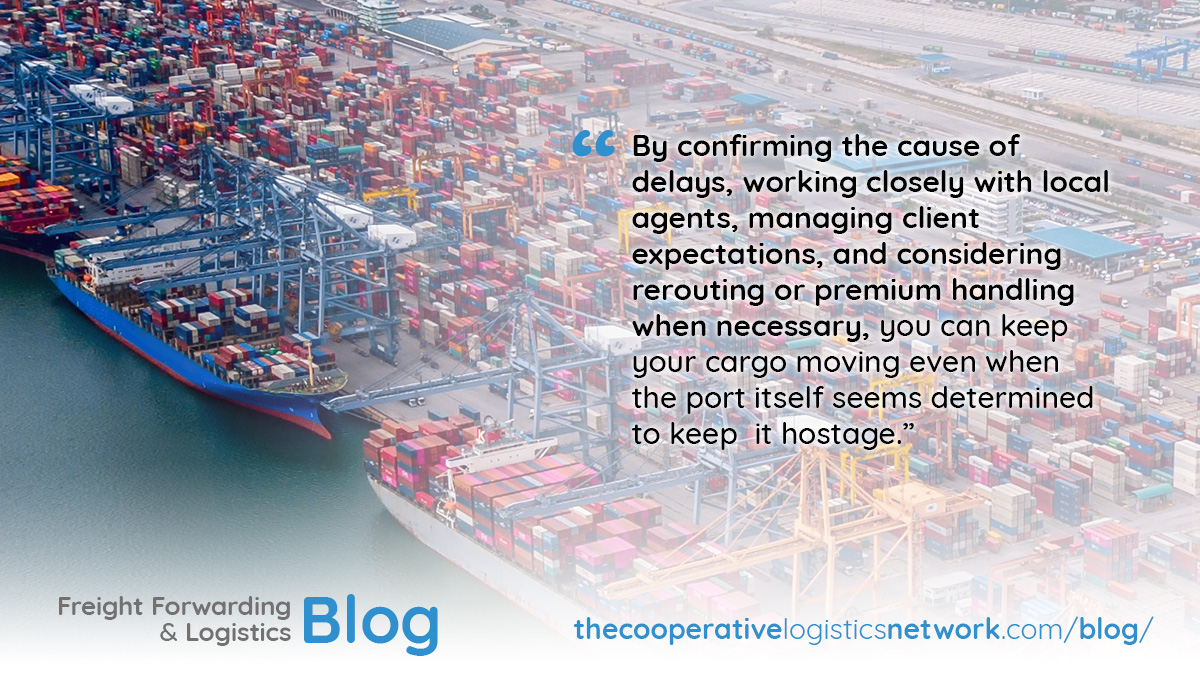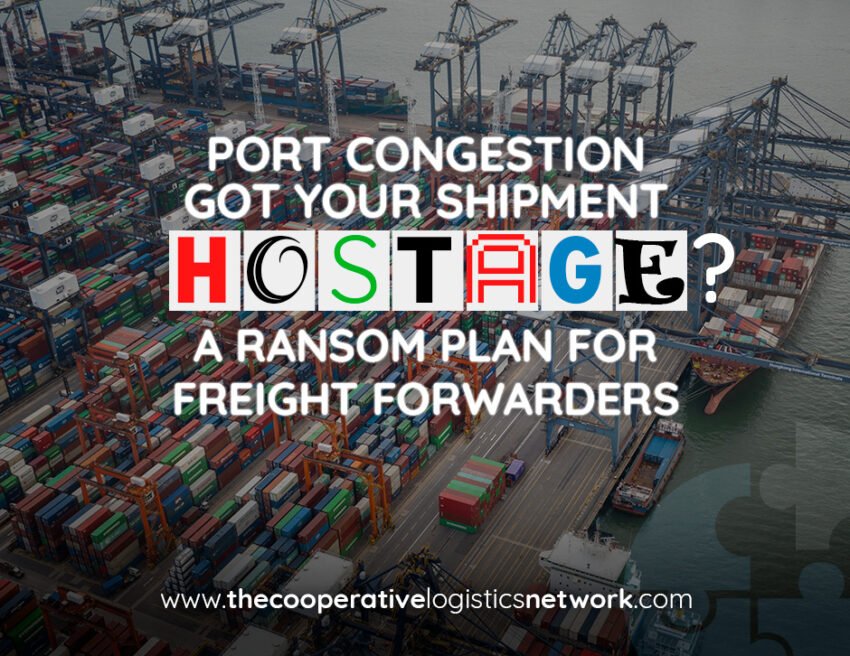The freight forwarder’s playbook for outsmarting port congestion in 2025
If you’ve been in freight forwarding long enough, you know the drill, more often than not, your container finally reaches the port… and then just sits there. Days pass. The tracking updates are frozen. Clients are calling. The port looks more like a parking lot than a hub of global trade.
Welcome to port congestion 2025 where supply chains face the double whammy of higher volumes and slower processing, and where your shipment might as well be on vacation without you.
The good news? While you can’t control the port’s operational speed, you can control your strategy for keeping cargo moving and clients calm. Think of it less as paying a ransom and more as negotiating your shipment’s early release. Let’s break down the causes, the fixes, and the prevention game plan so you can outsmart congestion before it strangles your schedule.

Why port congestion 2025 is hitting hard
Port congestion isn’t new, but 2025 has brought its own unique mix of problems.
-
Record cargo volumes – Consumer demand remains strong in many markets, and seasonal peaks are pushing capacity limits.
-
Labour shortages – Ongoing staffing gaps mean fewer hands to handle higher volumes.
-
Weather disruptions – Unpredictable storms and flooding events have slowed port operations in key global hubs.
-
Infrastructure strain – Some ports are handling volumes far beyond what they were designed for, leading to bottlenecks.
When these factors combine, even well-run ports experience backlogs. For freight forwarders, that means higher demurrage and detention costs, missed connections, and a lot of client hand-holding.
Step one: Confirm your container’s status
Before you panic or start blaming the port authority, get the facts. Is your container actually stuck due to port congestion 2025, or is it on a customs hold? Is there a carrier delay, or is the vessel waiting for a berth? Contact the shipping line, terminal operator, or local port agent for a status update. Sometimes what looks like congestion is actually a documentation or payment issue you can solve quickly.
Step two: Work with your local agent
A trusted local partner at the port can be your biggest advantage. They know the workflow, they speak directly to terminal staff, and they can sometimes expedite the movement of your container through sheer familiarity with the system.
If you’re part of a trusted freight forwarders network like the Cooperative Logistics Network, this is where you cash in on those relationships. A quick call to a reliable agent on the ground can save you days.
Step three: Manage client expectations early
The earlier you tell a client about a possible delay, the better. Nobody wants to hear that their shipment is stuck after they’ve already promised it to their customer.
Here’s a pro tip: don’t just say “the port is congested.” Give specifics. For example, “Containers are moving through this terminal about three days behind schedule due to reduced crane availability.” This shows you’re on top of the situation and not hiding behind vague excuses.
Rerouting as a ransom strategy
If the port is experiencing severe congestion and your shipment hasn’t yet arrived, rerouting may be the best way to avoid the problem entirely. This could mean:
-
Switching to a nearby port with better throughput.
-
Using an inland depot or dry port for faster clearance.
-
Coordinating intermodal transfers to bypass bottlenecked terminals.
While rerouting can add upfront costs, it often saves money in the long run by avoiding heavy demurrage, missed deadlines, and unhappy clients.
Breaking the hostage situation with priority services
Some ports and carriers offer premium services for faster handling; think of it as paying for VIP access. While you don’t want to rely on these options for every shipment, they can be worth it for high-value or time-sensitive cargo.
Examples include:
-
Expedited gate moves.
-
Dedicated crane or handling slots.
-
Priority discharge from vessel.
Yes, it’s an extra expense, but when you’re facing a critical delivery deadline, it can be the “ransom payment” that makes sense.
Customs and documentation: The hidden congestion factor
Even in the thick of port congestion 2025, not all delays are purely operational. Cargo can get caught in the logjam because customs clearance isn’t complete. If your paperwork is missing or incorrect, your container gets bumped down the priority list.
To avoid this:
-
Pre-clear shipments whenever possible.
-
Ensure all permits, certificates, and invoices are correct before the cargo arrives.
-
Keep a direct communication line with your customs broker or local agent.
Planning ahead: Beating port congestion before it starts
While you can’t control macroeconomic trends or weather patterns, you can take proactive steps to reduce your risk:
-
Ship during off-peak times – Avoiding high-volume weeks around holidays or seasonal surges can make a big difference.
-
Use multiple ports – Spread your cargo across different entry points to reduce dependency on one congested hub.
-
Book early – Secure vessel space and inland transport well ahead of time to avoid last-minute bottlenecks.
-
Track congestion trends – Many logistics platforms now offer real-time congestion data so you can adjust routing on the fly.
How strong networks save the day
One of the most effective tools against port congestion is your professional network. Being part of a global freight forwarder network like The Cooperative Logistics Network means you can call on vetted partners in other countries for on-the-ground updates, alternative routing suggestions, and local problem-solving. These connections can often make the difference between a cargo stuck for days and one that gets released with minimal delay.
Not a member yet? Join us today!
The bottom line
Port congestion 2025 is testing the patience and budgets of freight forwarders worldwide. But it’s not an unbeatable enemy. By confirming the cause of delays, working closely with local agents, managing client expectations, and considering rerouting or premium handling when necessary, you can keep your cargo moving even when the port itself seems determined to keep it hostage.
Remember: congestion isn’t just a logistics challenge; it’s also a test of communication, planning, and adaptability. Get those right, and you’ll not only survive but strengthen your reputation as a forwarder who delivers even when the port tries to hold your shipment for ransom.


